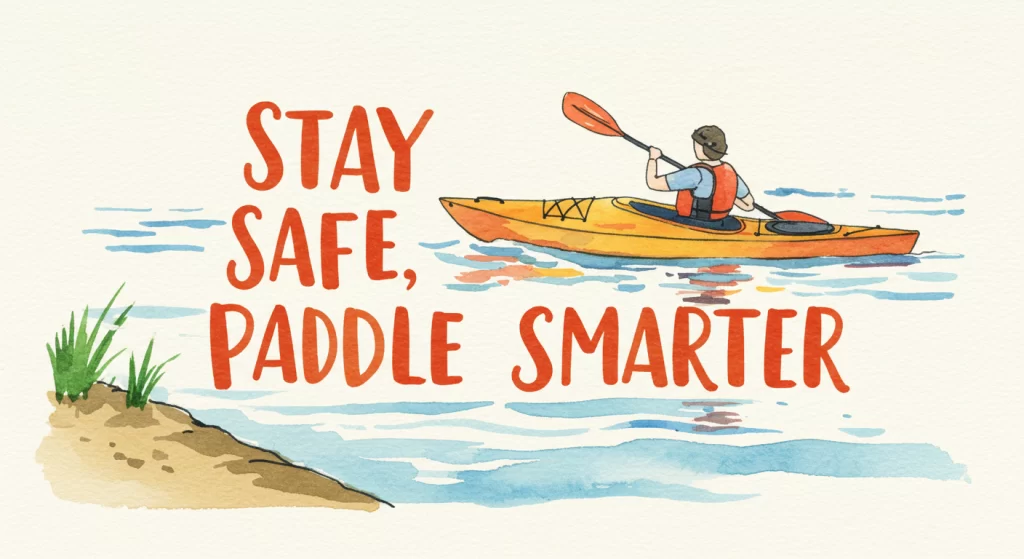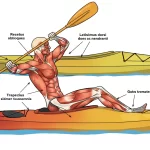
Kayaking safety starts with knowing when to stay ashore. Learn when to avoid kayaking due to weather, health risks, water hazards, and more.
Imagine gliding across a serene lake at sunrise, the water mirroring the sky. Now, picture that same scene with dark clouds rolling in, gusts of wind whipping the surface into chaos, and your kayak capsizing in icy water. Knowing when not to paddle is just as critical as mastering your stroke. In this guide, we’ll explore the conditions that demand you stay ashore—because the smartest kayakers live to paddle another day.
Why Listening to Your Body and Environment Matters
Kayaking is an exhilarating way to connect with nature, but it’s not without risks. From sudden weather changes to hidden health limitations, ignoring red flags can turn a peaceful outing into a life-threatening ordeal. Let’s dive into the scenarios where staying out of the water is the wisest choice.
Physical Injuries: When Pain Outweighs the Paddle
Shoulder Injuries: A Paddler’s Achilles’ Heel
Shoulder injuries like rotator cuff tears or labral tears are common among kayakers due to the repetitive motion of paddling. If you’re experiencing pain or limited mobility, hitting the water could worsen the damage. According to Angle Oar, shoulder issues are a leading reason paddlers quit the sport.
Tip: Opt for low-impact exercises like swimming to rebuild strength before returning to your kayak.
Knee Problems: Mobility Matters
Knee injuries or chronic conditions like arthritis can make entering, exiting, or adjusting your kayak nearly impossible. Imagine struggling to brace your legs in the cockpit during a sudden wave—this could lead to instability or even capsizing.
Arthritis and Osteoporosis: Hidden Risks
Arthritis in the hands or wrists weakens your grip, while osteoporosis increases fracture risks during falls. If your bones or joints feel fragile, prioritize land-based adventures.
Health Conditions: Know Your Limits
Severe Asthma or Breathing Issues
Kayaking demands stamina, and choppy waters or cold air can trigger asthma attacks. Always carry an inhaler and avoid paddling alone if you have respiratory conditions.
Paralysis: Adaptive Kayaking Isn’t Always Feasible
While adaptive kayaking exists, severe paralysis may limit your ability to steer or react quickly. Consult a specialist to determine safe options tailored to your abilities.
Weather and Environmental Red Flags
Extreme Weather: Nature’s Wrath Is Unforgiving
Thunderstorms: Lightning Loves Water
Water conducts electricity, making kayakers prime targets during storms. The National Weather Service advises staying off the water if thunderstorms are forecast.
High Winds: Waves Turn Treacherous
Winds above 15–20 mph create whitecaps that can swamp your kayak. Check apps like Windy for real-time updates before heading out.
Fog: Navigation Nightmares
Reduced visibility increases collision risks with boats or rocks. Postpone your trip if the fog is dense.
Cold Water: Hypothermia’s Silent Threat
Cold water saps body heat 25 times faster than air. Even in spring, temperatures below 60°F (15°C) can lead to hypothermia within minutes of immersion.
Cold Water Risks Table
| Water Temperature | Time to Hypothermia | Survival Tips |
|---|---|---|
| 32–40°F (0–4°C) | <15 minutes | Wear a drysuit, avoid solo trips |
| 50–60°F (10–15°C) | 30–60 minutes | Dress in layers, carry a whistle |
| Above 60°F (15°C) | 1–2 hours | Stay hydrated, monitor fatigue |
Source: Baysports
Contaminated Water: Invisible Dangers
Polluted water harbors bacteria like Leptospira, which causes flu-like symptoms. After heavy rains, avoid urban rivers or lakes near industrial areas.
Skill Level and Preparation: Overconfidence Kills
Tackling Advanced Routes Too Soon
Class IV rapids or open ocean kayaking require technical skills. Start with calm waters and gradually progress. The American Canoe Association offers courses for all levels.
Skipping Safety Gear: A Recipe for Disaster
Essential Gear Checklist
- Life jacket (PFD)
- Bilge pump and paddle float
- Dry bag with first-aid kit
- Navigation tools (compass, GPS)
- Weather radio
Without these, even minor mishaps escalate. As noted by Path & Paddle, 80% of kayaking fatalities involve no life jacket.
Wildlife and Other Hidden Hazards
Aggressive Wildlife: Know Your Environment
Alligators in Florida, snakes in Australian rivers, or even territorial swans can turn a paddle into a panic. Research local fauna and keep a safe distance.
Alcohol and Kayaking: A Deadly Mix
Alcohol impairs balance and judgment—two things you need to stay upright. A study by the U.S. Coast Guard found alcohol contributes to 30% of boating deaths.
Real-Life Lessons: When Kayakers Ignored the Signs
Case 1: The Cold Water Gamble
In 2019, a paddler capsized in 50°F water off Maine. Without a drysuit, he succumbed to hypothermia in 40 minutes. His final lesson? Respect the cold.
Case 2: Stormy Overconfidence
A group ignored thunderstorm warnings on Lake Michigan. A lightning strike injured two kayakers, underscoring the need to check forecasts.
Conclusion: Safety Is the Ultimate Skill
Knowing when not to kayak separates seasoned paddlers from statistic. Listen to your body, respect the weather, and never compromise on gear.
Your Next Steps:
- Bookmark a reliable weather app.
- Take a kayaking safety course.
- Share this guide with fellow paddlers.
The water isn’t going anywhere. Live to paddle another day by choosing wisdom over whimsy.
